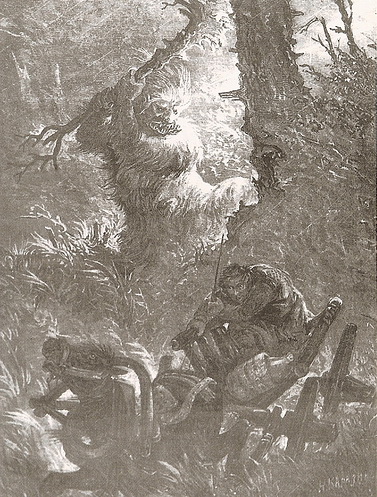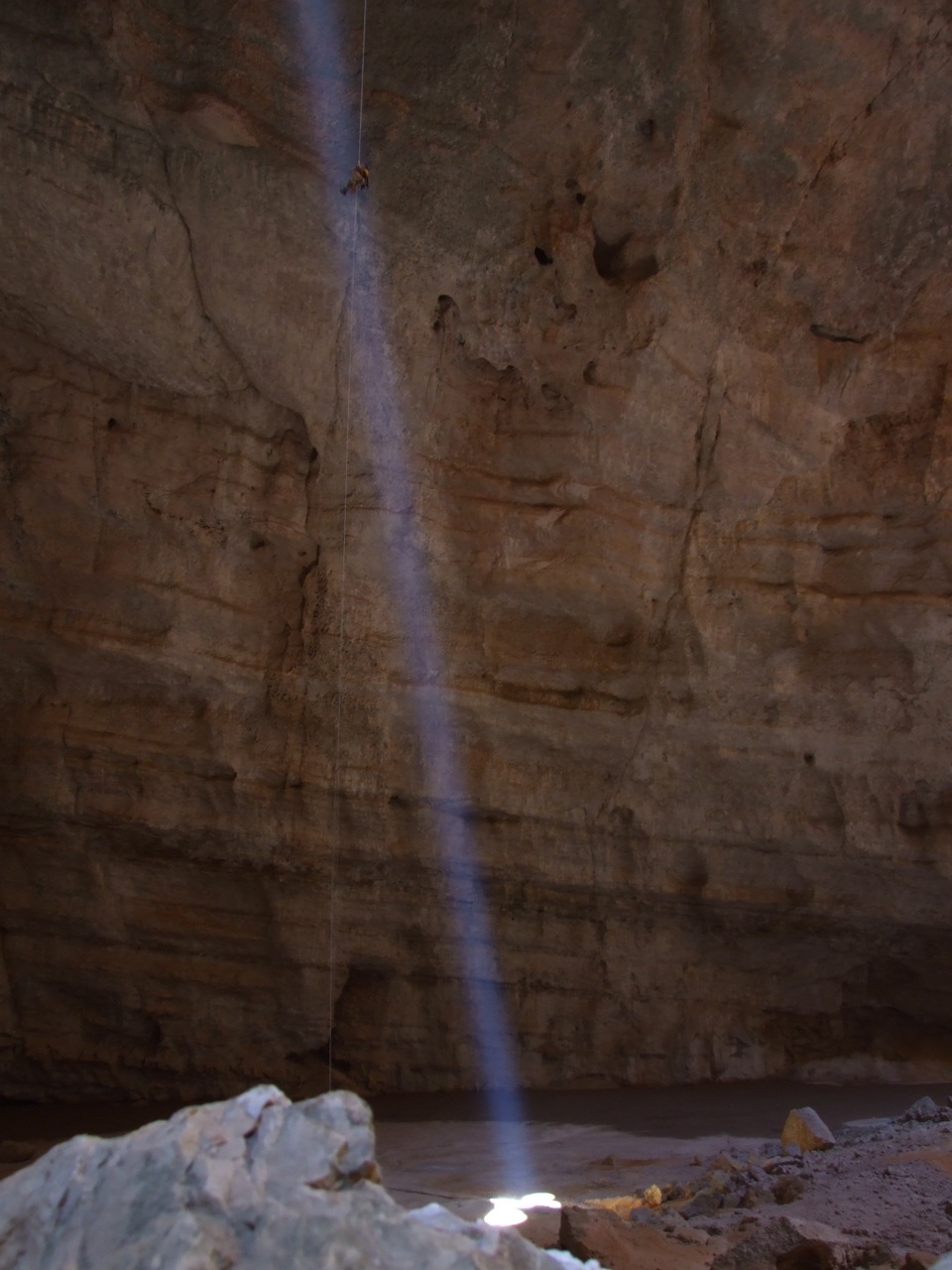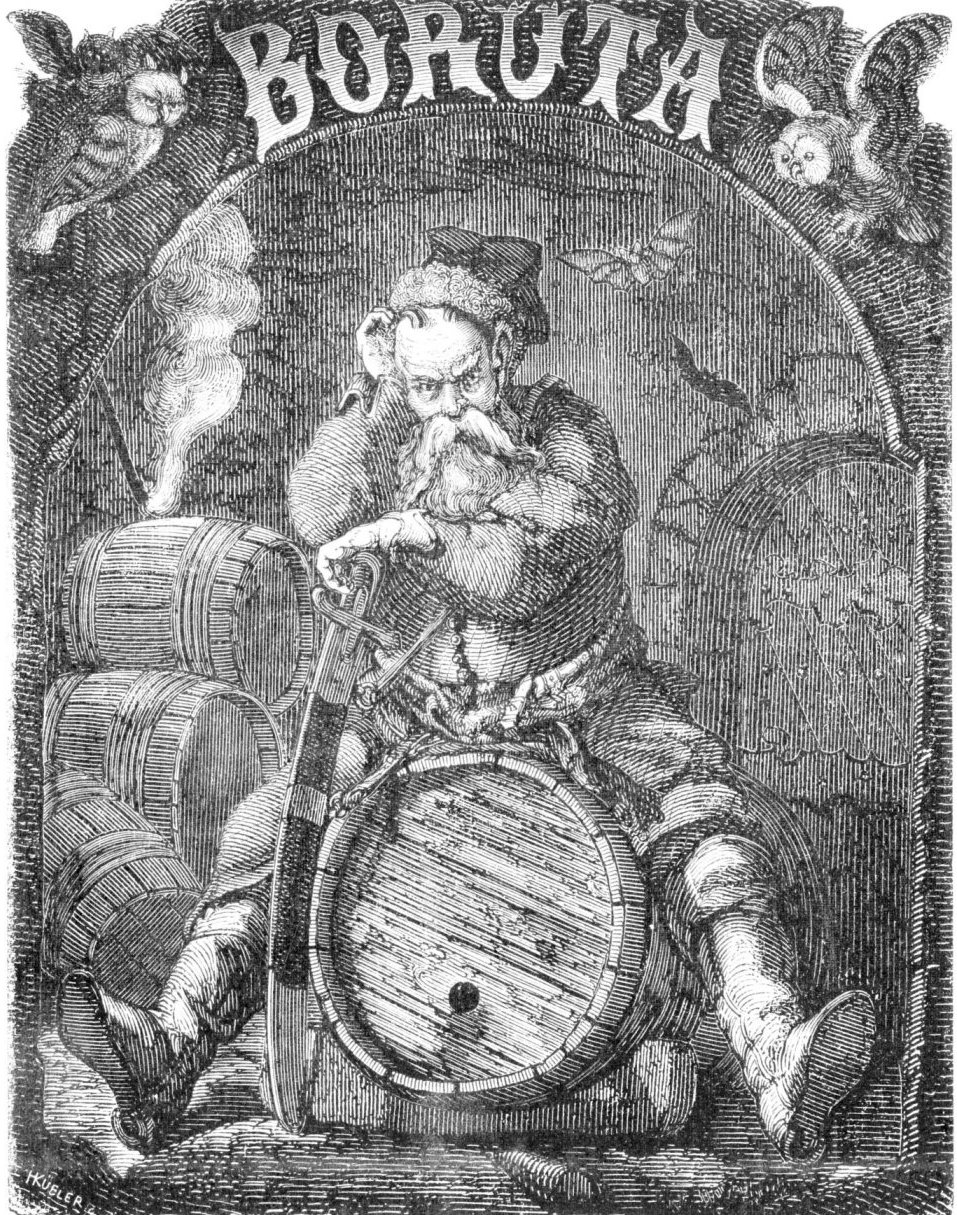|
Leshii
The Leshy (also Leshi; rus, –Μ–Β―à–Η–Ι, p=Υàl ≤e ²…®j; literally, " efrom the forest", pl, borowy, le≈¦nik, le≈¦niczy, lasowik, leszy) is a tutelary deity of the forests in pagan Slavic mythology. As the spirit rules over the forest and hunting, he may be related to the Slavic god Porewit. There is also a deity, named ''Svyatibor'' (''Svyatobor'', ''Svyatibog''), who is mentioned in the beliefs of the Eastern and Western Slavs as the god of forests and the lord of the leshies. His functions were identical to those of the god Veles. The Leshy is masculine and humanoid in shape, is able to assume any likeness and can change in size and height. In some accounts, Leshy is described as having a wife (''Leshachikha'', ''Leszachka'', ''Lesovikha'' and also, sometimes, the ''Kikimora'' of the swamp) and children (''leshonki'', ''leszonky''). He is known by some to have a propensity to lead travelers astray and abduct children (which he shares with Chort, the "Black One"), which ... [...More Info...] [...Related Items...] OR: [Wikipedia] [Google] [Baidu] |
Tutelary Deity
A tutelary () (also tutelar) is a deity or a spirit who is a guardian, patron, or protector of a particular place, geographic feature, person, lineage, nation, culture, or occupation. The etymology of "tutelary" expresses the concept of safety and thus of guardianship. In late Greek and Roman religion, one type of tutelary deity, the ''genius'', functions as the personal deity or ''daimon'' of an individual from birth to death. Another form of personal tutelary spirit is the familiar spirit of European folklore. Ancient Greece Socrates spoke of hearing the voice of his personal spirit or ''daimonion'': The Greeks also thought deities guarded specific places: for instance, Athena was the patron goddess of the city of Athens. Ancient Rome Tutelary deities who guard and preserve a place or a person are fundamental to ancient Roman religion. The tutelary deity of a man was his Genius, that of a woman her Juno. In the Imperial era, the Genius of the Emperor was a focus of Imperia ... [...More Info...] [...Related Items...] OR: [Wikipedia] [Google] [Baidu] |
Lithuanian Language
Lithuanian ( ) is an Eastern Baltic language belonging to the Baltic branch of the Indo-European language family. It is the official language of Lithuania and one of the official languages of the European Union. There are about 2.8 million native Lithuanian speakers in Lithuania and about 200,000 speakers elsewhere. Lithuanian is closely related to the neighbouring Latvian language. It is written in a Latin script. It is said to be the most conservative of the existing Indo-European languages, retaining features of the Proto-Indo-European language that had disappeared through development from other descendant languages. History Among Indo-European languages, Lithuanian is conservative in some aspects of its grammar and phonology, retaining archaic features otherwise found only in ancient languages such as Sanskrit (particularly its early form, Vedic Sanskrit) or Ancient Greek. For this reason, it is an important source for the reconstruction of the Proto-Indo-Euro ... [...More Info...] [...Related Items...] OR: [Wikipedia] [Google] [Baidu] |
Georgian Mythology
Georgian mythology ( ka, αÉΞαÉêαɆαɽαÉΘαÉöαɉ αɦαɉαɽαÉùαÉöαÉùαÉ£αɉαÉê, tr) refers to the mythology of pre-Christian Georgians ( /k ¨rtΥàv…¦li…ônz/; Georgian: αÉΞαÉêαɆαɽαÉïαÉîαÉöαÉîαÉëαɉ, romanized: kartvelebi, pronounced Α…ërt Αv…¦l…¦bi, an indigenous Caucasian ethnic group native to Georgia and the South Caucasus.The mythology of the Kartvelian peoples is believed by many scholars to have formed part of the religions of the kingdoms of Diauehi, Colchis and Iberia. Later influences include the mythologies of the Ancient Greeks, Tuite, Kevin, ''The Meaning of DΟΠl, Symbolic and Spatial Associations of the South Caucasian Goddess of Game Animals'', UniversitΟ© de MontrΟ©al the Vainakh peoples and Iranians βÄ™ the last-named comprising both the belief systems of the Northern Iranian nomad Scythians and Sarmatians (still preserved to some extent in the mythology of their descendants the Ossetians) and that of the Zoroastrian religion of the Ancient Persian empire, whic ... [...More Info...] [...Related Items...] OR: [Wikipedia] [Google] [Baidu] |
List Of Nature Deities
A ''list'' is any set of items in a row. List or lists may also refer to: People * List (surname) Organizations * List College, an undergraduate division of the Jewish Theological Seminary of America * SC Germania List, German rugby union club Other uses * Angle of list, the leaning to either port or starboard of a ship * List (information), an ordered collection of pieces of information ** List (abstract data type), a method to organize data in computer science * List on Sylt, previously called List, the northernmost village in Germany, on the island of Sylt * ''List'', an alternative term for ''roll'' in flight dynamics * To ''list'' a building, etc., in the UK it means to designate it a listed building that may not be altered without permission * Lists (jousting), the barriers used to designate the tournament area where medieval knights jousted * ''The Book of Lists'', an American series of books with unusual lists See also * The List (other) * Listing (di ... [...More Info...] [...Related Items...] OR: [Wikipedia] [Google] [Baidu] |
Komi Mythology
Komi mythology is the traditional mythology of the Komi peoples of northern Russia. Gods and spirits *En (–ï–Ϋ) - "Strength". The good creator god, and the enemy of Kul. He took the form of a swan. *Kul' or OmΟΕl' (–ö―É–Μ―¨ or –û–Φ”ß–Μ―¨) - "Weakness". A god of water and of the dead, and the evil creator god. He took the form of a grebe. * Vasa (–£–Α―¹–Α) - Another water spirit. Like Kul, he could be malicious and had to be appeased by throwing bread, a stick, cakes or tobacco into the water. He was the friend of millers. *Olys' or Olysya (–û–Μ―΄―¹―¨ or –û–Μ―΄―¹―è) - A hearth spirit, the equivalent of the Russian domovoi. Under the name Rynyshsa (–†―΄–Ϋ―΄―à―¹–Α) he is a water spirit associated with baths, appearing as a little hunchbacked old man with a white beard. *Aika (–ê–Ι–Κ–Α) - "Father" or "Parent". A spirit who protects a specific place. They became enemies of Stephen of Perm. *Peludi-Aika (–ü–Β–Μ―É–¥–Η-–ê–Ι–Κ–Α) - "Father Cornflower". A spirit who forbade peasants to l ... [...More Info...] [...Related Items...] OR: [Wikipedia] [Google] [Baidu] |
Jinn
Jinn ( ar, , ') βÄ™ also Romanization of Arabic, romanized as djinn or Anglicization, anglicized as genies (with the broader meaning of spirit or demon, depending on sources) βÄ™ are Invisibility, invisible creatures in early Arabian mythology, pre-Islamic Arabian Religious system, religious systems and later in Islamic mythology and Islamic theology, theology. Like humans, they are accountable for their deeds, can be either believers (''Muslim'') or unbelievers (''kafir''); depending on whether they accept God's guidance. Since jinn are neither innately evil nor innately good, Islam acknowledged spirits from other religions and was able to adapt spirits from other religions during its expansion. Jinn are not a strictly Islamic concept; they may represent several Religion in pre-Islamic Arabia, pagan beliefs integrated into Islam. To assert a strict monotheism and the Islamic concept of ''Tauhid'', Islam denies all affinities between the jinn and God, thus placing the jinn ... [...More Info...] [...Related Items...] OR: [Wikipedia] [Google] [Baidu] |
Hidebehind
The Hidebehind is a nocturnal fearsome critter from American folklore that preys upon humans that wander the woods,Botkin, B. A. (1977). ''The American People: Stories, Legends, Tales, Traditions and Songs''. New Jersey: Transaction Publishers. and was blamed for the disappearances of early loggers when they failed to return to camp.Brown, C. E. (1935). Paul Bunyan Natural History'. Madison: self-published. As its name suggests, the Hidebehind is said to be able to conceal itself. When an observer attempts to look directly at it, the creature quickly hides behind an object or behind the observer and therefore cannot be directly seen. The Hidebehind supposedly uses this ability to stalk human prey without being observed and to attack them without warning. Said victims, including lumberjacks and others who frequent the forests, are then dragged back to the creature's lair to be devoured. The creature subsists chiefly upon the intestines of its victim and has a severe aversion to alc ... [...More Info...] [...Related Items...] OR: [Wikipedia] [Google] [Baidu] |
Grand Bois (loa)
Grand Bois (meaning ''great wood'', also Grans Bwa, Bran Bwa, Ganga-Bois; ht, Gran Bwa) is an elemental, nature-oriented loa closely associated with trees, plants, and herbs in Haitian Vodou. Offerings to him include leaves and herbs, honey, and spiced rum. As a petro loa and loa of the wilderness, he can be fierce and unpredictable in some aspects.Torres, Rafael AgustΟ≠. "Loas y VΟ®vΟ®s del VudΟΚ", pp. 19-20 (in Spanish) Grand Bois, MaΟ°tre Carrefour (Master Crossroads), and Baron CimetiΟ®re (Baron Cemetery) form the triad of magicians. They represent the journey of life: ''Grand Bois'' represents the rich earth that you spring from and the dark woods you stumble through, ''Maitre Carrefour'' represents the various roads and paths you choose to travel on, and ''Baron CimitΟ®re'' represents the end of the trip. Grand Bois is represented by Saint Sebastian Saint Sebastian (in Latin: ''Sebastianus''; Narbo, Gallia Narbonensis, Roman Empire c. AD 255 βÄ™ Rome, Italia, Ro ... [...More Info...] [...Related Items...] OR: [Wikipedia] [Google] [Baidu] |
Devil Boruta
Devil Boruta ( pl, Diabe≈² Boruta) is a fictional character from Polish mythology, folklore and literature, associated with the Polish town of ≈¹Ρôczyca. The character is the transformation of the pagan Slavic demon '' leshy'' in post-Christianization times. Boruta is also referred to as ''b≈²otnik'',Pe≈²ka, Leonard (1987). ''Polska demonologia ludowa''. Warszawa: Iskry. pp.187. a swamp spirit known in the mythology of the Kashubians and especially the Eastern Slavs, where he is called a ''bolotnik''. He was usually considered to be a nobleman Nobility is a social class found in many societies that have an aristocracy. It is normally ranked immediately below royalty. Nobility has often been an estate of the realm with many exclusive functions and characteristics. The characteristi ..., and accordingly, he was usually busy with corrupting nobles, leaving other social classes to other devils - like Rokita the devil from the same region, who more often tempted peasants. T ... [...More Info...] [...Related Items...] OR: [Wikipedia] [Google] [Baidu] |
Berstuk
Slavic pseudo-deities (pseudo-gods, pseudo-goddesses) are Slavic deities that exist in popular or even scientific literature, but their historicity is not recognized by the vast majority of scholars, i.e., that the deity in question was not actually an object of worship among pagan Slavs. The pseudo-deities of the Slavs, like those of other ethnic groups, were created as a result of mistakes (e.g., by understanding the given name as a theonym, unfamiliarity with the Slavic languages, misunderstanding of pagan ritual, or uncritical use of sources), as a result of the creation and falsification of Slavic Romantics, or even as a result of falsification for political motives. The reason for the last two may be that, unlike, for example, Greek mythology, the sources on Slavic mythology are severely limited. The first Slavic pseudo-deities began to appear as early as the Middle Ages, mainly in Latin Christian texts, as a result of mistakes. Slavic pseudo-deities on a large scale began ... [...More Info...] [...Related Items...] OR: [Wikipedia] [Google] [Baidu] |
Basajaun
In Basque mythology, Basajaun (, "Lord of the Woods", plural: basajaunak, female basandere) is a huge, hairy hominid dwelling in the woods. They were thought to build megaliths, protect flocks of livestock, and teach skills such as agriculture and ironworking to humans. They were said to inhabit the forests of Gorbea and Irati. They walked in human fashion, with their bodies covered in hair and a very long mane that reached their feet. Far from being aggressive, the ''Basajaunak'' were protective of sheep flocks and they indicated their presence with a unanimous bell shake. When a storm or wolves approached, the ''Basajaun'' would shout and whistle on the mountain to warn shepherds. In exchange, the ''Basajaunak'' receive a piece of bread as tribute, which they collected while the shepherds were asleep. Despite this, however, the ''Basajaunak'' sometimes appear in the stories as terrifying men of the forest, of colossal forces with whom it was better not to run into, while in ... [...More Info...] [...Related Items...] OR: [Wikipedia] [Google] [Baidu] |
Ο³bΟΛdΟΛ
Ο³bΟΛdΟΛ ( tt-Cyrl, ”‰–±”ô–¥”ô; az, Τèb…ôd…ô; tr, Ebede) is an innocent forest spirit in Tatar mythology. It looks like an old woman. Ο³bΟΛdΟΛ also is represented in mythologies of Siberian peoples. Ο³bΟΛdΟΛ is a demon or spirit. He is a Turkic forest being, similar in nature to the ΡΑyes. He protects the birds, trees, and animals of the forest; he appears in the shape of a human with blue skin, two great horns, green hair, and a long green beard across his face, carrying a club or whip indicating his mastery of the forest. He can shapeshift into many different forms. As a human, he looks like a peasant with glowing eyes, and his shoes are on backwards. Should one ever encounter an Ο³bΟΛdΟΛ, one must thwart him immediately by turning all one's clothes inside out and backwards, and placing one's shoes on the opposite feet. See also * Archura * Bichura Bichura (russian: –ë–Η―΅―É―Ä–Α) is the name of several rural localities in Russia: * Bichura, Amur Oblast, a '' selo'' in Dmi ... [...More Info...] [...Related Items...] OR: [Wikipedia] [Google] [Baidu] |







